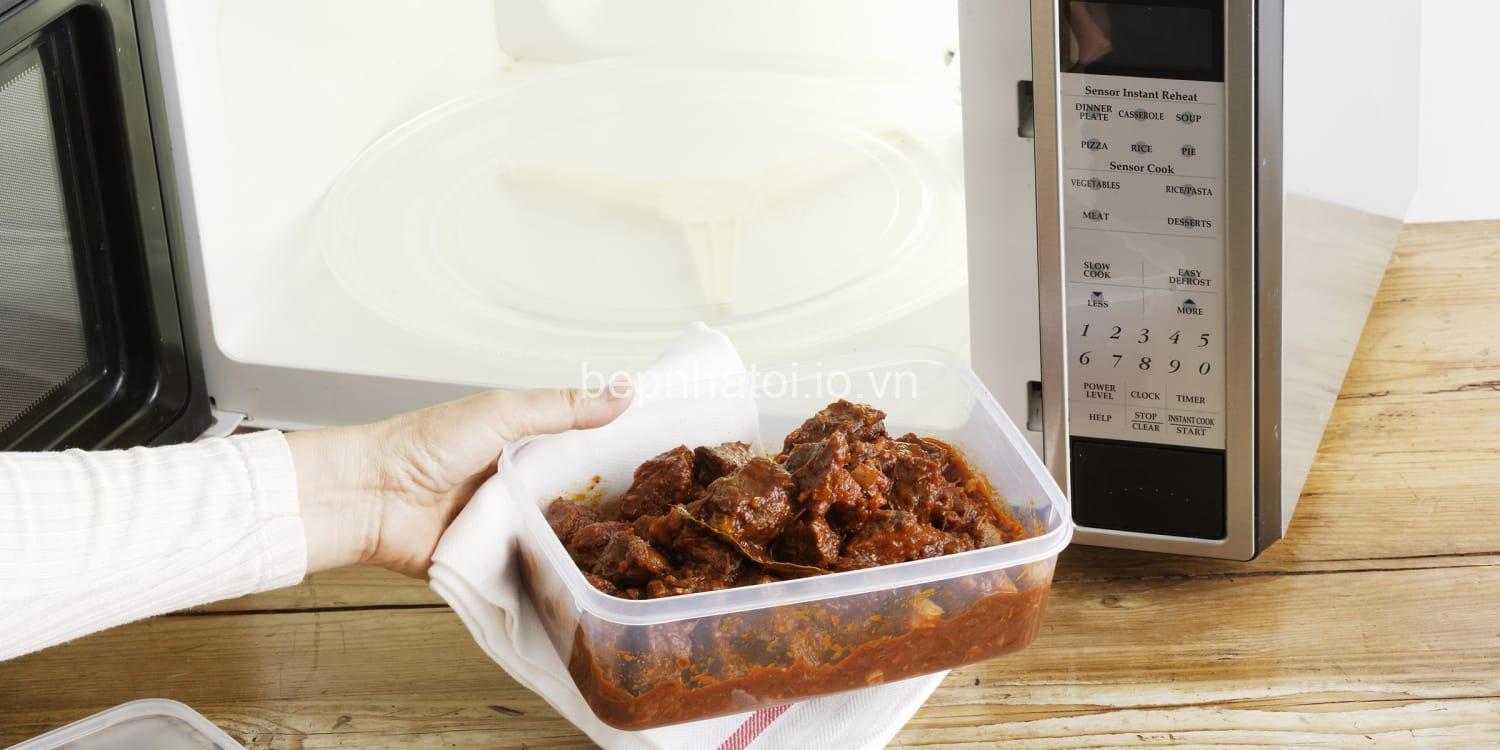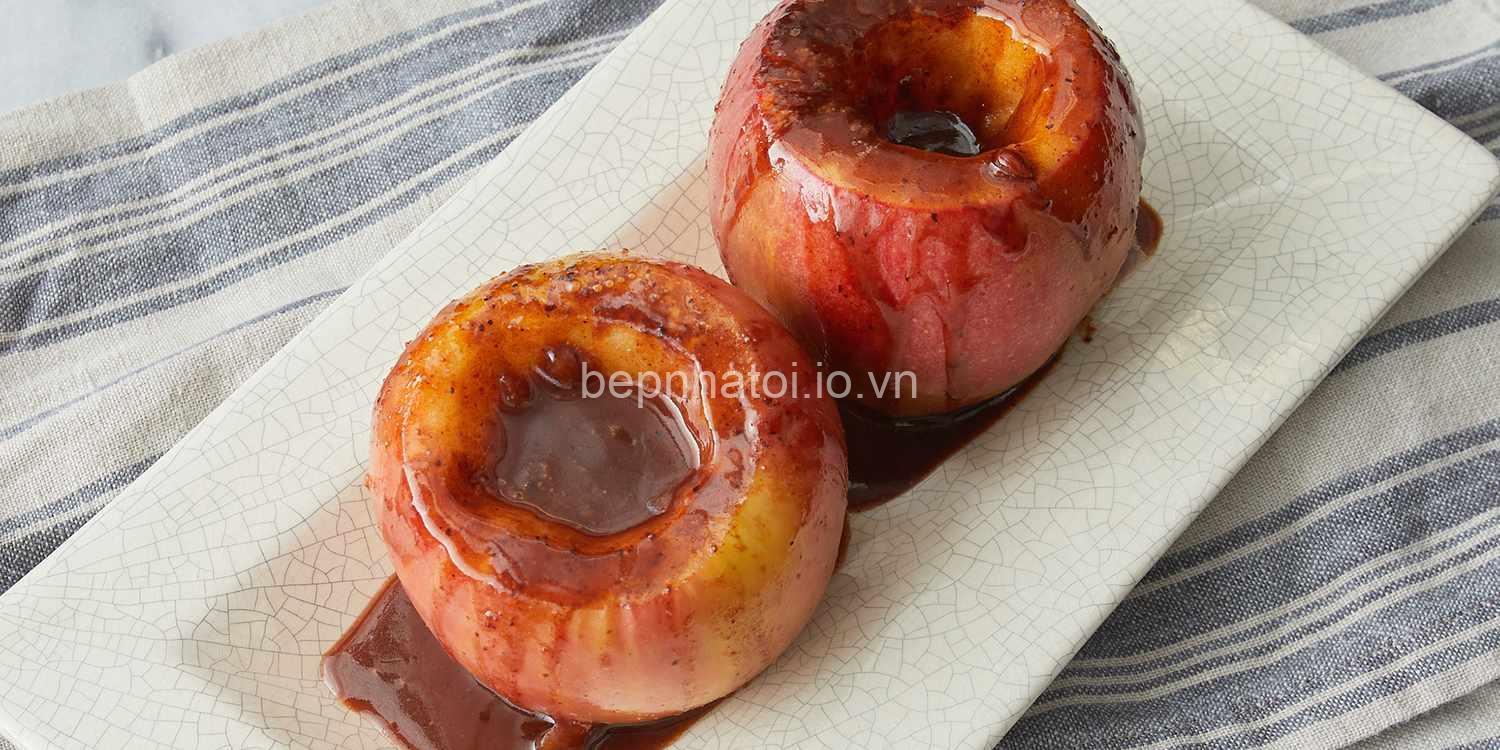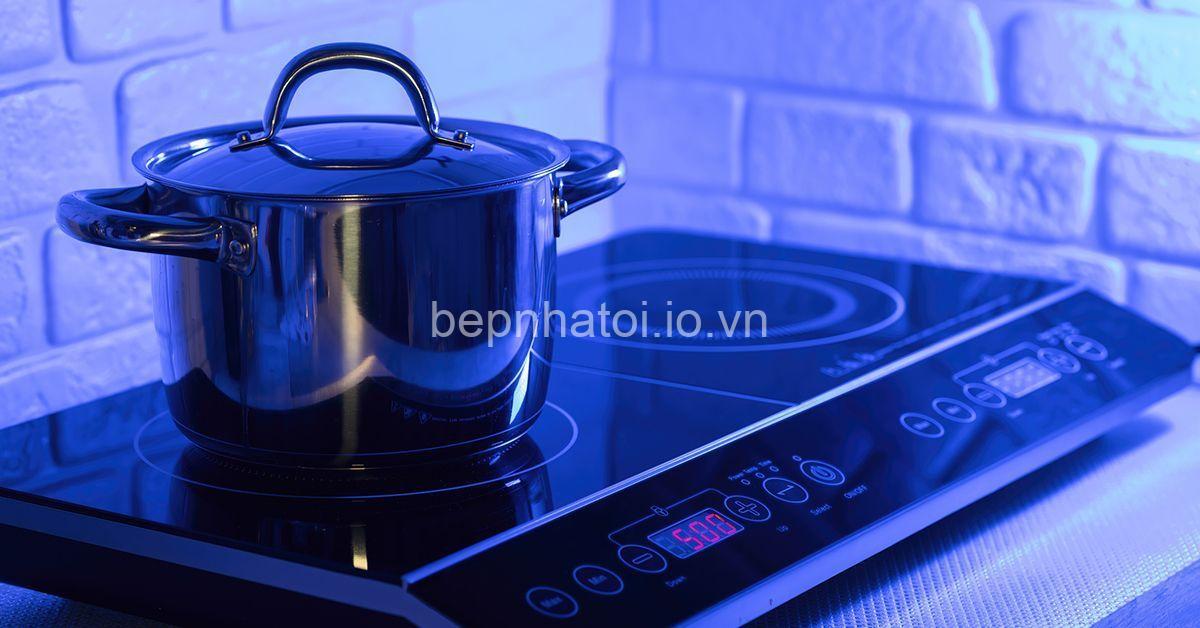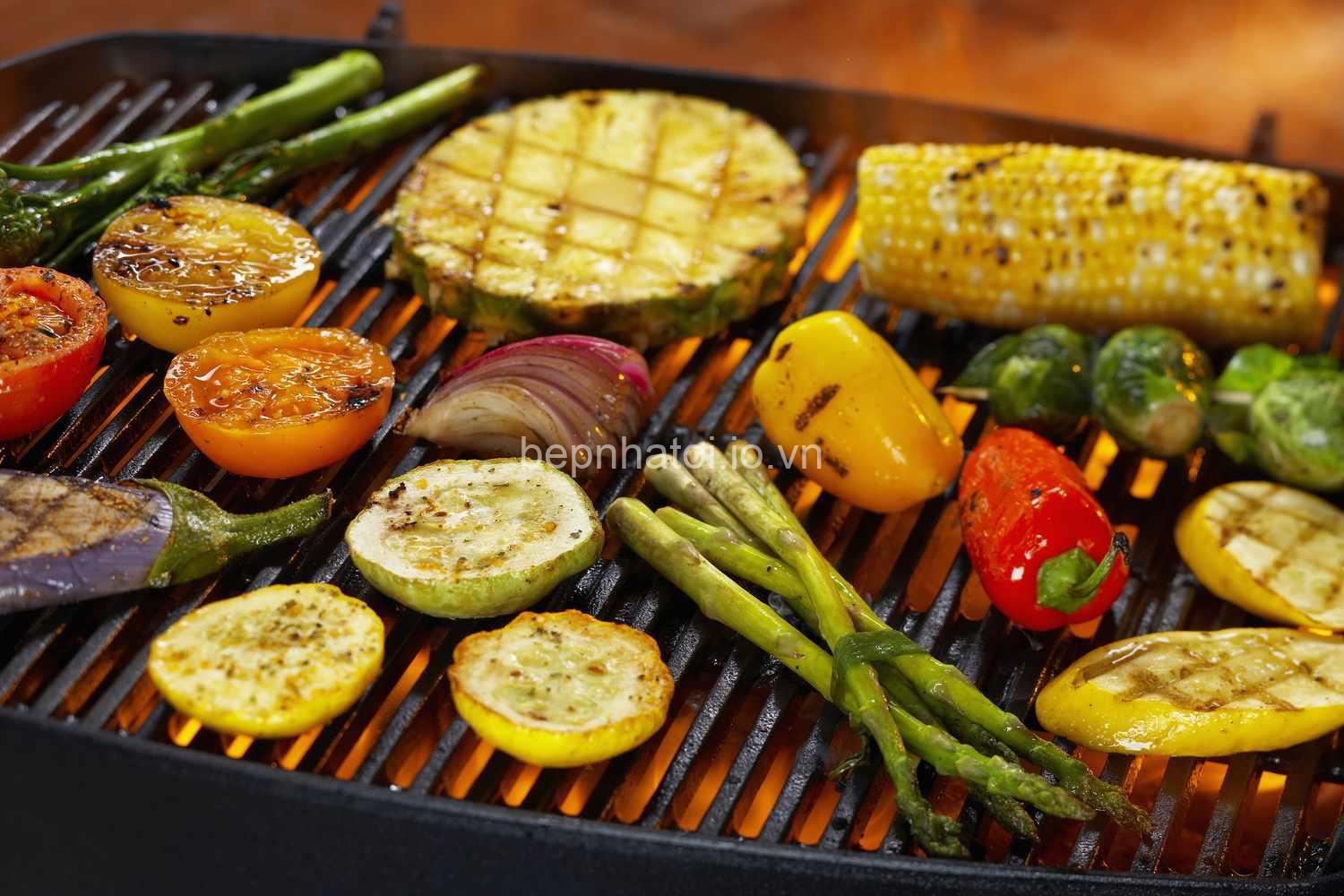
Microwave Food Done? Learn How to Know!. In today’s article, bepnhatoi.io.vn will explore with you in the most detailed and complete way. See now!
Understanding Microwave Cooking Fundamentals
Microwaves cook food differently than traditional ovens. Instead of heating the air around the food, microwaves directly heat the water molecules within the food. This process can be a bit tricky, but understanding the fundamentals will help you achieve perfect results every time.

How Microwaves Heat Food
Microwaves use electromagnetic radiation to excite the water molecules in food. These excited molecules vibrate, creating friction, which generates heat. The heat then spreads throughout the food, cooking it from the inside out.
Factors Influencing Cook Time
The time it takes to cook food in the microwave depends on several factors. Here are some things to keep in mind:
- Food Density: Denser foods like meat and potatoes take longer to cook than lighter foods like vegetables.
- Size and Shape: Larger and thicker pieces of food will take longer to cook than smaller and thinner pieces.
- Microwave Power Level: The higher the power level, the faster the food will cook.
- Food Type: Each type of food has a different amount of water content and density, requiring different cooking times.
Safe Temperature for Food
It’s crucial to ensure your food reaches a safe internal temperature to kill harmful bacteria. The USDA recommends the following safe internal temperatures:
- Poultry: 165 degrees Fahrenheit
- Ground Meat: 160 degrees Fahrenheit
- Whole Cuts of Beef, Pork, Lamb, and Veal: 145 degrees Fahrenheit
Always use a food thermometer to ensure the internal temperature of your food is safe to eat. Visual cues like color changes and texture can be unreliable indicators of doneness.
Recognizing Doneness
While visual cues like color changes can be helpful, it’s important to rely on a combination of factors to assess food doneness. Look for:
- Temperature Changes: The food should feel warm or hot to the touch.
- Appearance Changes: The food may change color, soften, or bubble.
- Textural Changes: The food may become tender, firm, or crispy.
- Smell: The food should have a pleasant aroma.
Food-Specific Doneness Indicators
Each food type has its own set of doneness indicators. It’s important to know what to look for to avoid overcooking or undercooking.
Vegetables
- Leafy greens: They should be wilted and tender, but not mushy.
- Root vegetables: They should be tender when pierced with a fork.
- Overcooked vegetables: They become mushy and lose their flavor.
Meat
- Chicken: Chicken is cooked when the juices run clear, not pink, and the internal temperature reaches 165 degrees Fahrenheit.
- Beef: Beef should be cooked to your desired level of doneness, but always ensure the internal temperature reaches 145 degrees Fahrenheit.
- Pork: Pork should be cooked to 145 degrees Fahrenheit.
Fish and Seafood
- Flaky texture: When cooked, fish should flake easily with a fork.
- Opaque appearance: The flesh of the fish should be opaque, not translucent.
Other Food Types
- Pasta: Pasta should be cooked until it is al dente, meaning it has a slight resistance when bitten.
- Grains: Grains should be cooked until they are tender and fluffy.
- Leftovers: Reheated leftovers should reach an internal temperature of 165 degrees Fahrenheit.
Techniques for Determining Doneness
In addition to relying on visual cues, using specific techniques can ensure your food is perfectly cooked in the microwave.
Using a Microwave Thermometer
A microwave thermometer is a valuable tool for determining doneness, especially for meat and poultry. It provides accurate temperature readings, allowing you to ensure your food is cooked to the right temperature.
- Types of Thermometers: There are different types of microwave thermometers available, including instant-read thermometers and probe thermometers.
- Accuracy and Reliability: Choose a thermometer that is accurate and reliable to ensure you get accurate readings.
- Placement and Reading Techniques: Follow the instructions of your specific thermometer for proper placement and reading.
The Spin Technique
Rotating food during cooking helps ensure even heating in the microwave.
- Benefits of Rotating Food: Rotating food helps prevent cold spots and ensures the food cooks evenly.
- Ensuring Even Heating: Rotating food every 30 seconds to a minute helps distribute heat more evenly.
- Techniques for Different Food Types: Adjust the rotation frequency depending on the size and shape of the food.
Covering Food
Covering food with a lid or plastic wrap can help speed up cooking time and retain moisture.
- Benefits of Using a Lid or Plastic Wrap: Covering helps trap steam, which cooks the food faster and prevents it from drying out.
- Faster Cooking Times: Food cooks faster when covered because the steam helps distribute heat more effectively.
- Moisture Retention: Covering food helps prevent it from drying out, resulting in a more tender and flavorful dish.
- Proper Covering Techniques: Use microwave-safe lids or plastic wrap and ensure there is no air trapped underneath.
Troubleshooting Common Microwave Cooking Issues
Even with the best intentions, sometimes microwave cooking can go wrong. Here’s how to troubleshoot common issues:
Overcooked Food
- Adjusting Power Levels: Lower power levels can help prevent overcooking.
- Shorter Cooking Times: Reduce the cooking time to prevent overcooking.
- Reheating Techniques: Use lower power levels or a longer time to reheat overcooked food.
Undercooked Food
- Adjusting Cook Times: Increase the cooking time if the food is undercooked.
- Observing Visual Cues: Pay attention to visual cues like color changes and texture.
- Using a Thermometer: Use a thermometer to check the internal temperature of the food.
Uneven Heating
- Rotating or Stirring Food: Rotating or stirring food during cooking helps distribute heat more evenly.
- Using a Turntable: Most microwaves have a turntable, which automatically rotates food to ensure even heating.
- Placement in the Microwave: Place the food in the center of the microwave for optimal heating.
Food Exploding in the Microwave
- Understanding Food Properties: Some foods, like potatoes and eggs, are prone to exploding in the microwave.
- Using Appropriate Containers: Use containers designed for microwave use to prevent explosions.
- Piercing Foods: Pierce potatoes and other foods with a fork to allow steam to escape.
Food Not Heating Properly
- Checking Microwave Wattage: Ensure your microwave is operating at the correct wattage.
- Replacing Malfunctioning Magnetron: If your microwave is not heating properly, the magnetron might need replacement.
- Using Appropriate Containers: Ensure you’re using microwave-safe containers.
Additional Microwave Cooking Tips and Tricks
Here are some extra tips to help you achieve the best results with your microwave:
Pre-Heating Dishes
- Benefits of Pre-Heating: Pre-heating dishes helps cook food more evenly and prevents sticking.
- Techniques for Different Materials: Different materials require different pre-heating methods. For example, ceramic dishes can be pre-heated in the microwave, while metal dishes should not.
- Suitable Dishes for Pre-Heating: Ceramic, glass, and microwave-safe plastic dishes are suitable for pre-heating.
Microwave-Safe Containers
- Identifying Safe Containers: Look for containers with “microwave-safe” labels.
- Avoiding Unsafe Materials: Avoid using metal containers in the microwave as they can cause sparks and damage the appliance.
- Tips for Using Containers: Ensure containers are not cracked or chipped and have a tight-fitting lid.
Microwave Recipes
- Finding Reliable Resources: Look for recipes specifically designed for microwave cooking.
- Adjusting Recipes for the Microwave: Some recipes need to be adjusted for microwave cooking.
- Tips for Success with Microwave Recipes: Follow the instructions carefully and pay attention to the cooking time.
Microwave Safety Guidelines
Always prioritize safety when using your microwave. Here are some important tips:
- Never operate an empty microwave: Running an empty microwave can damage the appliance.
- Avoid using metal containers: Metal can cause sparks and damage the microwave.
- Keep microwave clean: Regularly clean the inside and outside of your microwave.
- Never use damaged containers: Replace any cracked or chipped containers.
- Monitor children near microwave: Never leave children unattended near a microwave.
Conclusion
Mastering microwave cooking is all about understanding the fundamentals and applying the right techniques. By following the tips and guidelines in this article, you can enjoy delicious and safely cooked food in the microwave. If you have any questions or feedback, please leave a comment below. You can also check out more information on pet care and products on my website, bepnhatoi.io.vn. Don’t forget to share this article with your friends and family!
FAQ
What are some signs that my food is done in the microwave?
- Visual cues: Food may change color, soften, or bubble.
- Textural changes: Food may become tender, firm, or crispy.
- Smell: Food should have a pleasant aroma.
- Temperature: Food should feel warm or hot to the touch.
How can I avoid overcooking food in the microwave?
- Reduce power levels: Using a lower power setting can prevent overcooking.
- Shorten cook times: Start with shorter cooking times and increase as needed.
- Monitor carefully: Keep an eye on the food and check it frequently.
Why is my food unevenly heated in the microwave?
Uneven heating can occur due to several factors:
- Placement: The food might not be placed in the center of the microwave.
- Rotation: The food might not be rotating properly on the turntable.
- Container: The container might not be microwave-safe or appropriate for the food.
How can I tell if my food is safe to eat after being microwaved?
- Internal temperature: Use a food thermometer to ensure the food has reached the recommended safe internal temperature.
- Visual cues: Look for signs of doneness, like color changes and texture.
- Smell: Make sure the food doesn’t have a burnt or foul smell.
What are some tips for using a microwave thermometer?
- Choose a reliable thermometer: Look for a thermometer with good reviews and accuracy.
- Follow the instructions: Read the instructions carefully before using the thermometer.
- Place the probe correctly: Insert the probe into the thickest part of the food.
- Wait for the reading to stabilize: Don’t remove the thermometer until the reading is stable.
ERE (Entity, Relation, Entity):
- Microwave (Microwave Oven), Has, Power Level
- Food, Is, Cooked In (Microwave)
- Food, Has, Temperature
- Food, Has, Texture
- Food, Has, Appearance
- Food, Is, Safe To Eat
- Microwave, Has, Time Setting
- Microwave, Has, Container (Microwave Safe Container)
- Food, Has, Doneness Indicator (Visual, Textural, Smell)
- Food, Has, Recipe
- Microwave, Is, Made By (Brand)
- Food, Is, Stored In (Refrigerator, Freezer)
- Food, Has, Weight
- Microwave, Has, Size
- Food, Has, Ingredients
- Microwave, Has, Features (Timer, Turntable, Sensor)
- Microwave, Has, Cost (Price)
- Food, Is, Measured In (Grams, Ounces, Pounds)
- Food, Is, Related To (Diet, Nutrition)
- Microwave, Is, Used For (Cooking, Reheating, Defrosting)
EAVs (Entity – Attribute – Value):
- Microwave – Power Level – High, Medium, Low
- Food – Type – Vegetables, Meat, Seafood, Grains, Leftovers
- Food – Temperature – Internal Temperature, Surface Temperature
- Food – Texture – Soft, Firm, Crunchy, Tender, Mushy
- Food – Appearance – Color, Bubbling, Steaming
- Microwave – Time – Seconds, Minutes
- Food – Safety – Undercooked, Overcooked
- Microwave – Container – Microwave Safe, Non-Microwave Safe
- Food – Doneness – Cooked Through, Partially Cooked, Raw
- Microwave – Function – Defrost, Reheat, Cook
- Food – Smell – Aroma, Burnt, Raw
- Microwave – Brand – Samsung, LG, Panasonic, etc.
- Food – Weight – Grams, Ounces, Pounds
- Microwave – Size – Cubic Feet
- Food – Recipe – Specific Recipe Name
- Microwave – Settings – Auto Cook, Manual Cook
- Food – Storage – Refrigerator, Freezer
- Microwave – Features – Timer, Turntable, Sensor
- Food – Ingredients – List of Ingredients
- Microwave – Cost – Price Range
Semantic Triples (Subject, Predicate, Object):
- Microwave, Has, Power Level
- Food, Is, Cooked In, Microwave
- Food, Has, Temperature
- Food, Has, Texture
- Food, Has, Appearance
- Food, Is, Safe To Eat
- Microwave, Has, Time Setting
- Food, Has, Doneness Indicator
- Food, Is, Made From, Ingredients
- Microwave, Has, Features (Timer, Turntable)
- Food, Has, Recipe
- Microwave, Has, Cost
- Food, Has, Weight
- Food, Is, Stored In, Refrigerator
- Microwave, Is, Used For, Cooking
- Food, Has, Smell
- Food, Has, Appearance (Color)
- Food, Has, Appearance (Bubbling)
- Food, Has, Appearance (Steaming)
- Microwave, Is, Made By, Brand






